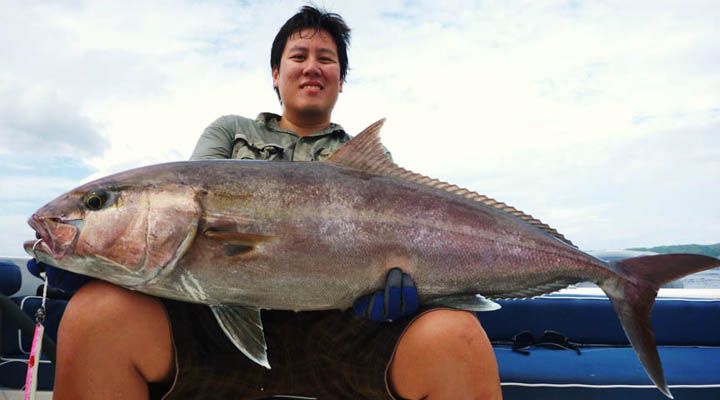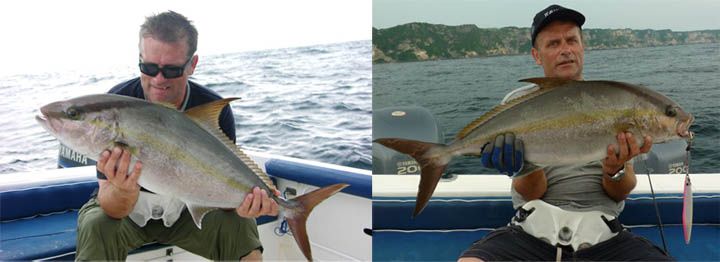The answer I think is... all the time!
Recently my friend and fellow GT Popping member Simon Bomholt was in fishing in Mexico and correspondence centred a bit on this subject as he was catching what he thought were Amberjacks and the boat guides were calling them as Almaco. I vaguely knew about some structural differences and that the two fish could be very similar, but that was it. So I got researching.
As I thought I vaguely remembered, Almaco Jacks (
seriola rivoliana) tend to be rounder than Amberjacks (
seriola dumerili), giving a more trevally-like profile. Without a lot of experience of both species though, such differences can be hard to ascertain. The identification clincher seems to be the 2nd dorsal fin which is much longer on an Almaco and hooked backwards towards the tail when fully extended. The same fin in an Amberjack is a completely different, flatter shape.
What this means is that I have certainly been calling Almaco Jacks I have caught as Amberjacks!
There are also other more subtle differences such as the head shape and eye position, but those will never be easy to determine on a boat when you are keen to get a photo and release the fish. There are sometimes colour differences as well but they are very variable, and I hate using colour as an ID guide for any fish. Assessing the shape of the 2nd dorsal is though very easy.
The geographical range of both fish is very similar. Those of us fishing in Asia and Australia for example could certainly be catching both species. Amberjack range:
http://www.fishbase.org/Summary/SpeciesSummary.php?ID=1005&AT=amberjack# Almaco Jack range:
http://www.fishbase.org/Summary/SpeciesSummary.php?ID=1007&AT=almaco+jack .
Here's a couple of pics I have handy which will help:
This is definitely an Amberjack - note the relatively short and flat 2nd dorsal fin (caught by my friend Ben at Batu Abah, Bali):

These two are definitely Almaco Jack - note the long and hooked 2nd dorsal fin (caught by me only about 1 km south of the Amberjack above):

If folks here were already aware of these differences, then my apologies for wasting space. I wasn't though and would not mind betting I am not the only one who was making these ID errors.